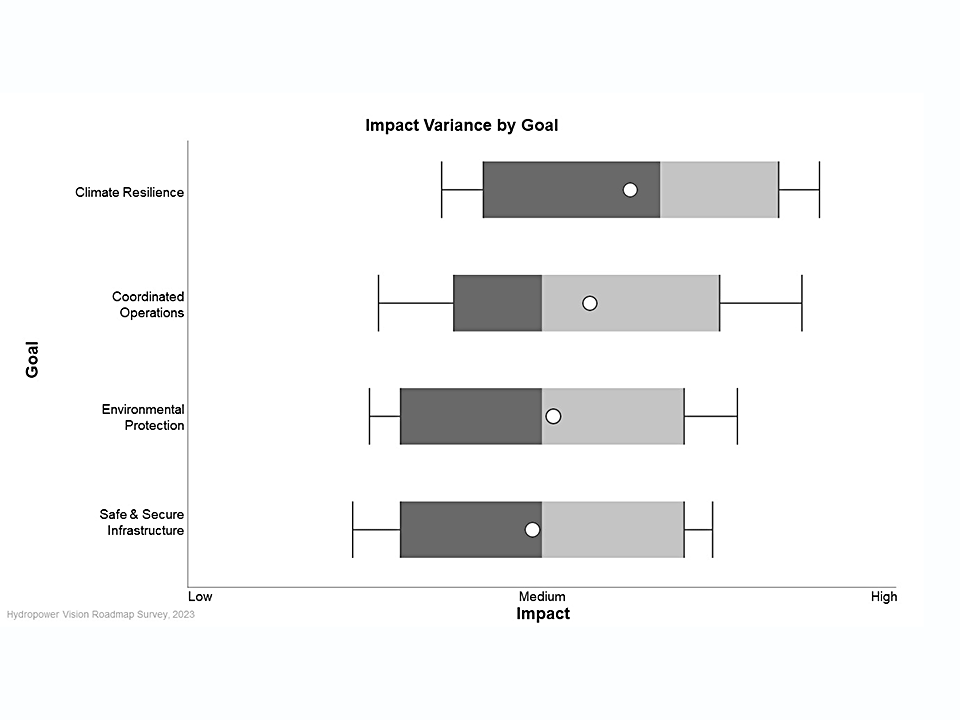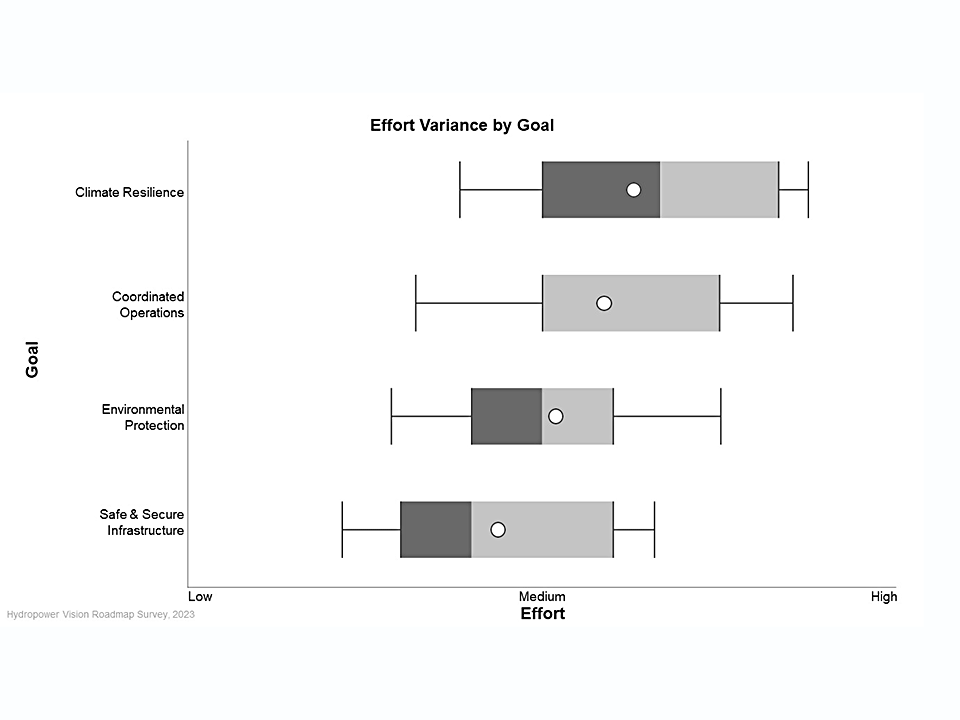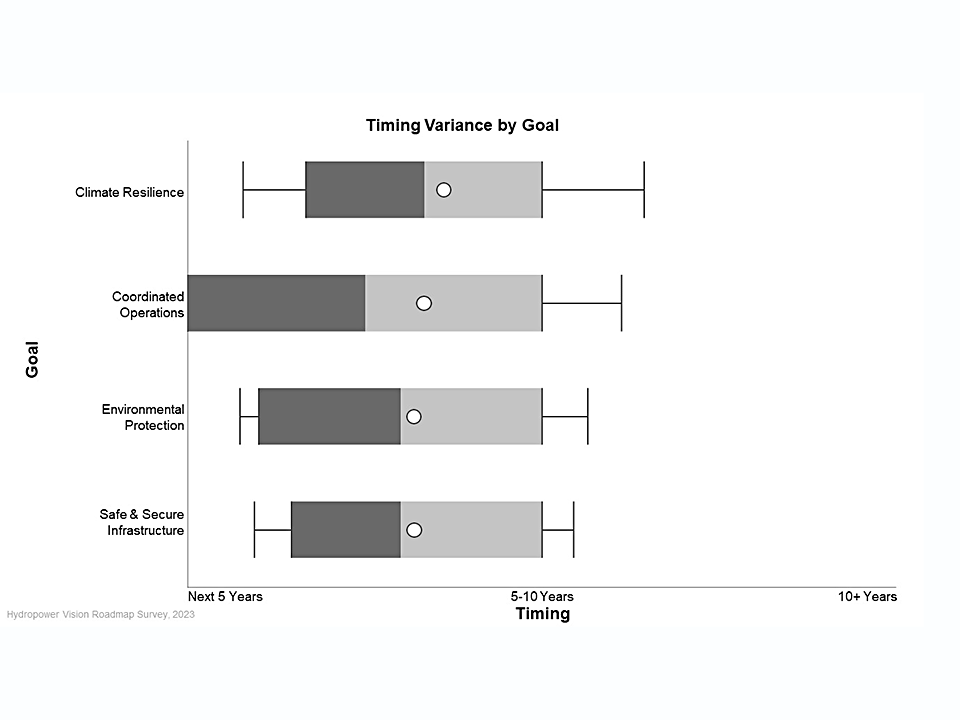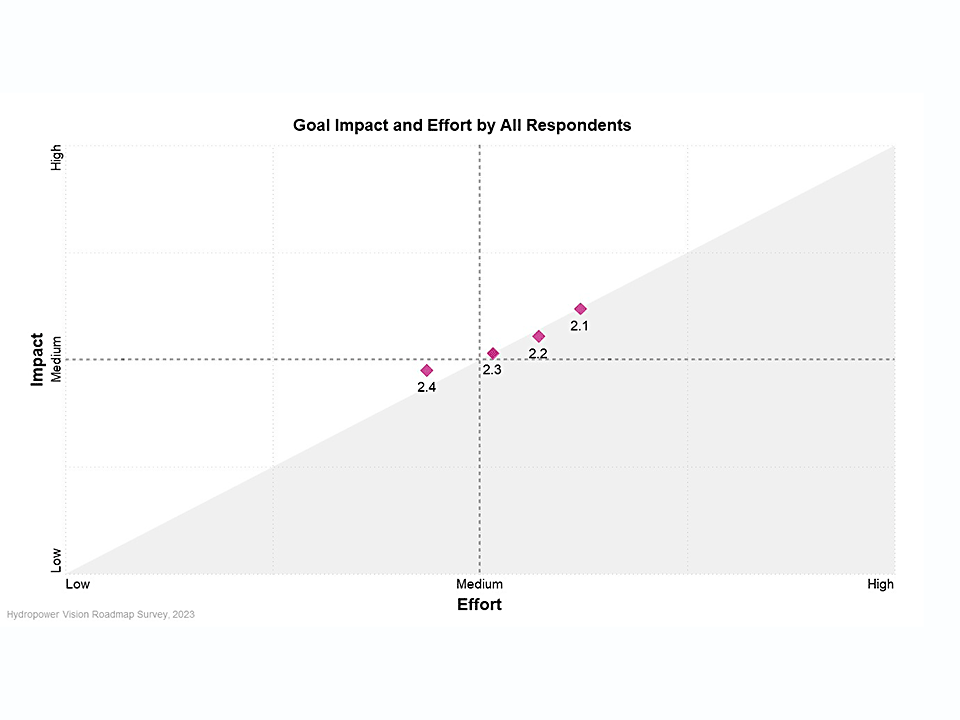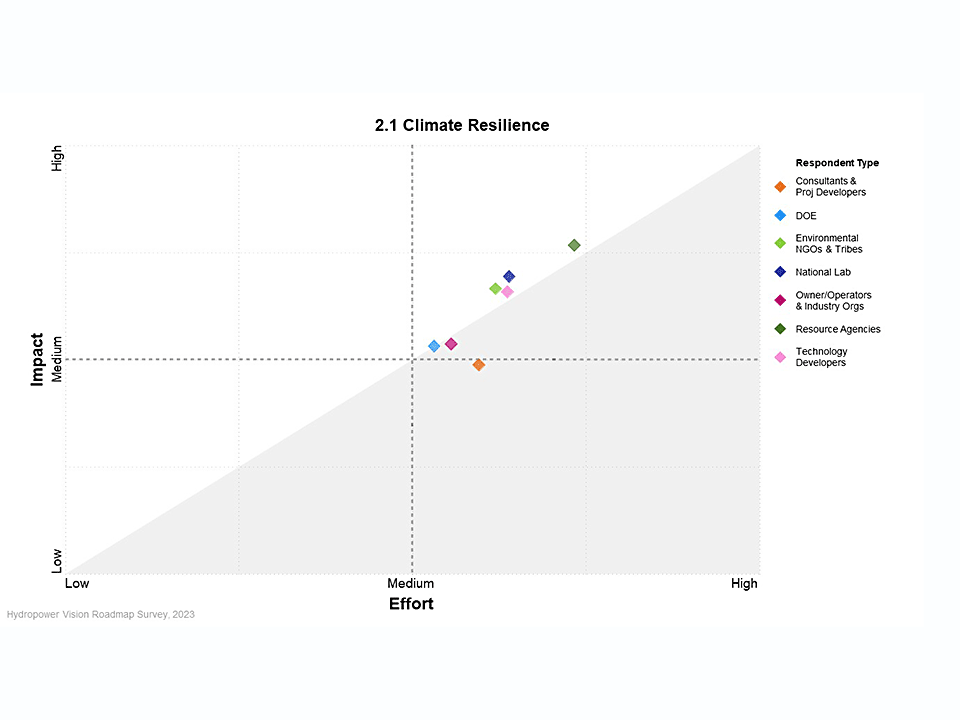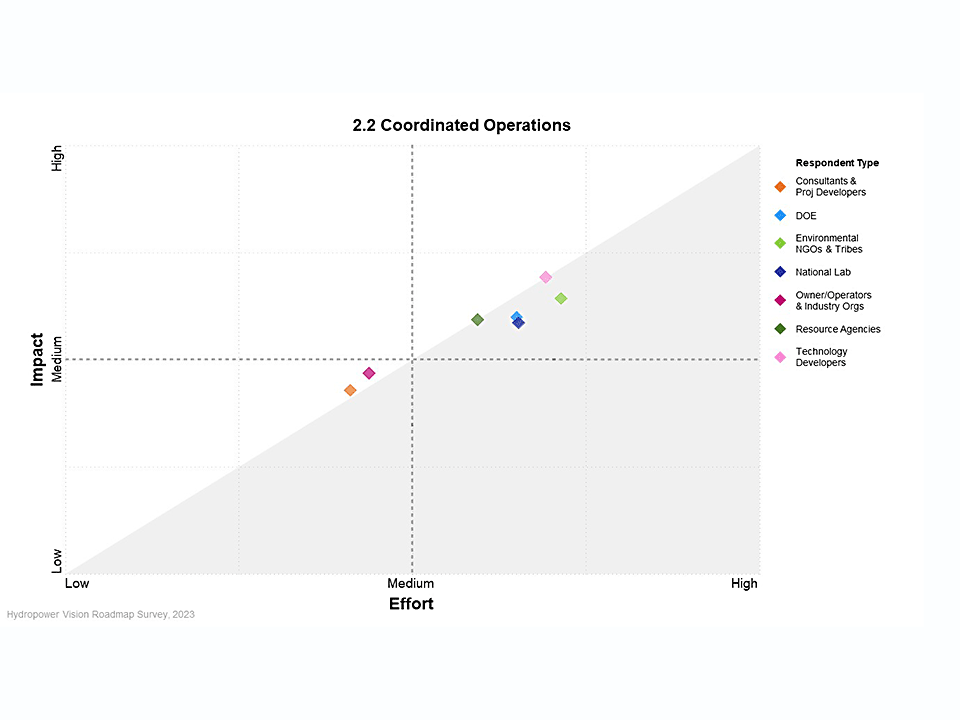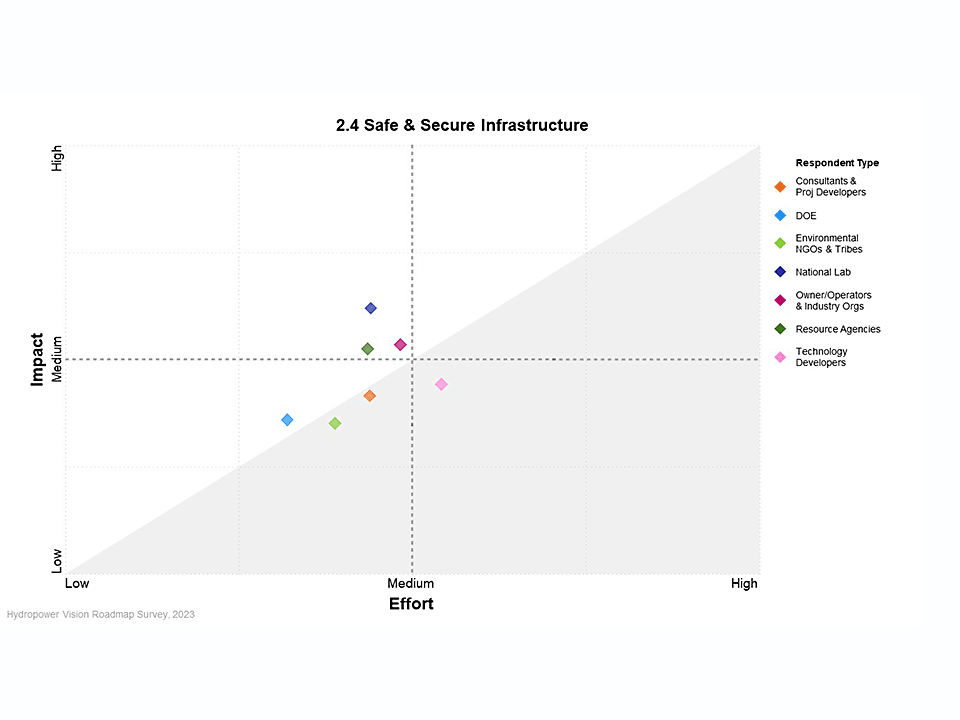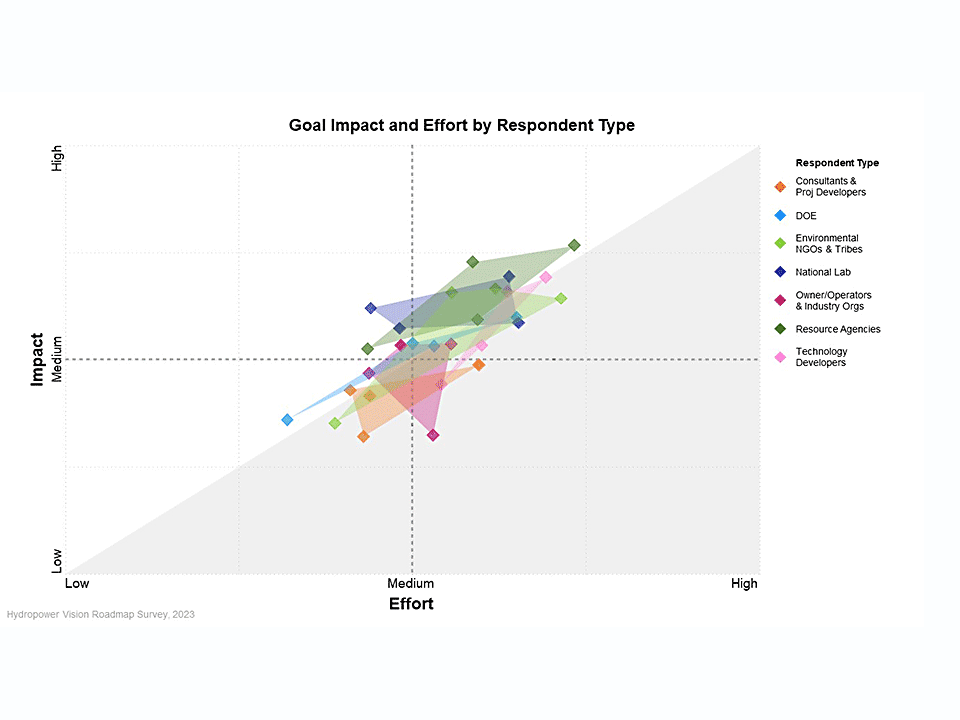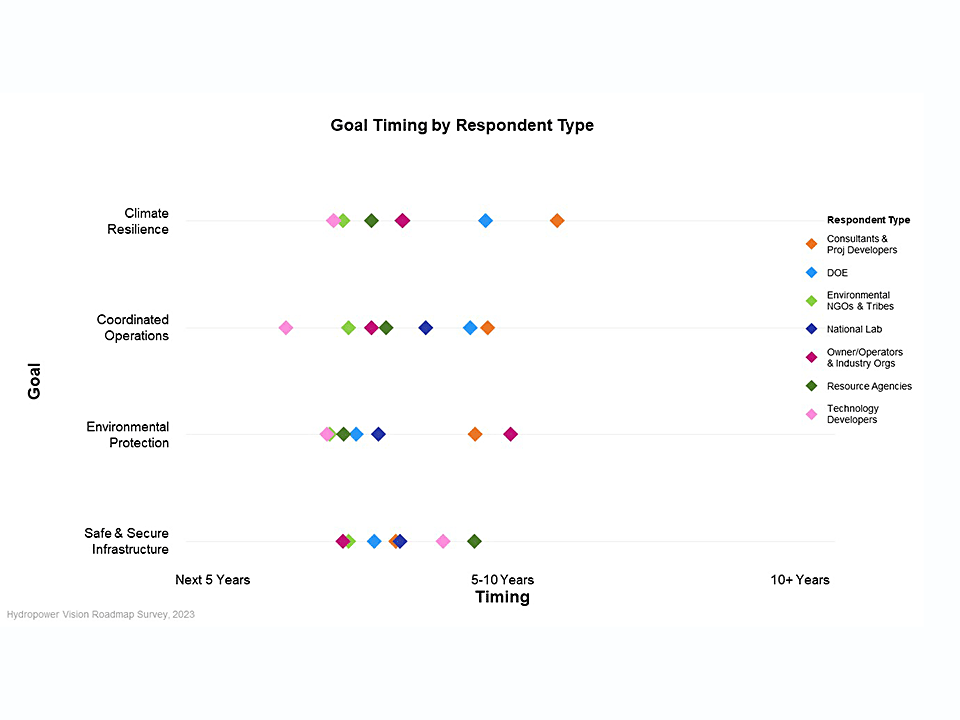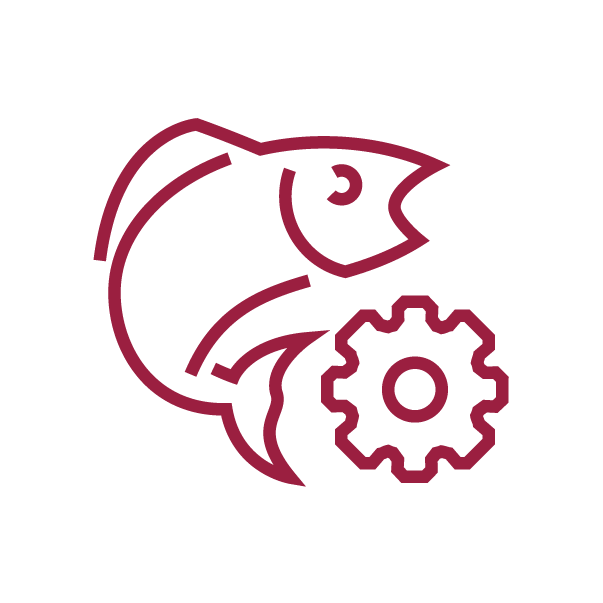 Hydropower differs from other forms of electricity generation in its close connection to its surroundings as well as to the electrical system. Water management, environmental stewardship, and community benefits connect facilities, users, and communities throughout a watershed. The Sustainable Development and Operations area mitigates potential negative impacts of developing and operating hydropower to preserve and expand its role in achieving a clean, equitable energy future. The scope of this area includes one or more coordinated facilities within a watershed throughout the life cycle of development, operation, decommissioning, and removal.
Hydropower differs from other forms of electricity generation in its close connection to its surroundings as well as to the electrical system. Water management, environmental stewardship, and community benefits connect facilities, users, and communities throughout a watershed. The Sustainable Development and Operations area mitigates potential negative impacts of developing and operating hydropower to preserve and expand its role in achieving a clean, equitable energy future. The scope of this area includes one or more coordinated facilities within a watershed throughout the life cycle of development, operation, decommissioning, and removal.
While sustainability underlies every aspect of development and operations, hydropower visionaries identified four goals crucial to moving toward 2050:
- 2.1 Climate Resilience
- 2.2 Coordinated Operations
- 2.3 Environmental Protection
- 2.4 Safe and Secure Infrastructure
The Climate Resilience goal seeks actions to ensure that electricity generation remains reliable in altered climate conditions and that hydropower is operated to mitigate climate change. Hydropower operations are integrated with other water uses and facilities throughout a basin under the Coordinated Operations goal. The Environmental Protection goal focuses on identifying measures that can be demonstrated as effective, leading to greater acceptance and usefulness. Activities that improve the safety and security of hydropower dams support the Safe and Secure Infrastructure goal.
Forum members have drawn upon their collective experience and expertise to identify activities that will help achieve each of these goals. Similar suggestions were combined and, if necessary, moved to the area and goal where impact and alignment were greatest. For example, developing an environmentally friendly technology would fall within the Environmental Performance goal in the Advanced Technology area, even though the resulting technology may find application in advancing the Environmental Protection goal in the Sustainable Development and Operation area. This approach generated a set of activities that can direct collaboration, strategic planning, and progress tracking efforts across the hydropower community without creating silos of effort.
Goals & Activities
- Goal 2.1 Climate resilience – Operations are resilient to climate change and support its mitigation.
Activity 2.1.1 – Create regionally standardized approaches for incorporating climate predictions into basin water management.
Climate predictions are important for understanding the viability of development options and for understanding the availability and impact of operational alternatives. Standardization will help all parties develop, negotiate, and plan a sustainable and robust approach to water management in the face of future uncertainties.
Activity 2.1.2 – Identify and implement structural and operational adaptations to increase the resilience of hydropower or its mitigation of climate change.
Structural and operational adaptations may be needed to account for how hydrology, water use, and electricity demand change as climate varies. Adaptations may also help hydropower contribute to a clean, reliable electrical system.
Activity 2.1.3 – Quantify levels of greenhouse gas emissions from hydropower and develop approaches to mitigate them that can be tested and demonstrated.
There is great uncertainty about the emission of greenhouse gasses that result from the operation of hydropower facilities. Precise, accurate measurement tools and sampling plans that address the spatial and temporal variation will help reduce uncertainty in the level of emissions and how to mitigate them.
- Goal 2.2 Coordinated operations – Development and operations are coordinated with other basin-scale water uses.
Activity 2.2.1 – Create tools or approaches to coordinate real-time storage management to maintain water use benefits and safety while providing flexible, reliable electricity generation.
The key to achieving the best mix of shared benefits is coordination among users. Tools that allow the possibilities to be examined jointly, explicitly illustrating trade-offs among users can foster that coordination by reducing the fear of unknown consequences.
Activity 2.2.2 – Create and evaluate approaches to meet water rights and improve the ability to deliver other benefits of water resources under altered availability.
Hydropower operates within the larger system of water resources. Coordination among water users can help ensure that water rights and other beneficial uses such as hydropower continue to deliver benefits in the face of altered hydrology.
- Goal 2.3 Environmental protection – Environmental protection measures and metrics are demonstrated and accepted.
Activity 2.3.1 – Create, validate, and disseminate operational decision tools for incorporating fish survival and other environmental outcomes at a facility or throughout a basin.
Environmental stewardship is often a primary consideration for river operations, especially during critical periods for fish spawning, rearing, or migration. Decision tools are needed to better estimate how hydropower operations affect the populations of fish and other organisms so that those impacts can be more effectively incorporated into operational planning.
Activity 2.3.2 – Create, validate, and track metrics for environmental protection that extend from a single facility to the watershed scale.
There is a need for greater agreement about the health of rivers that are interacting with hydropower facilities. If meaningful metrics can be created and agreed upon by interested parties, it will improve the tracking of environmental health and more reliably identify negative or positive impacts.
Activity 2.3.3 – Create standard approaches to study and document the environmental effects of pumped storage hydropower.
Pumped storage hydropower plays an important role in maintaining the reliable delivery of electricity as the penetration of intermittent renewable generators like wind and solar increases. Standard approaches to study the environmental effects of pumped storage facilities would help identify facilities with a positive mix of benefits.
Activity 2.3.4 – Research approaches for hydropower development or operation that restore connectivity and alluvial processes.
More than water flows in rivers. River geomorphology is driven by alluvial processes moving sediment downstream. Many fish must move up- or down-stream to find habitats appropriate for a given life stage. Restoring connectivity for movement of aquatic organisms and sediment will help maintain environmental health.
Activity 2.3.5 – Develop collaborative approaches for evaluating cultural resource preservation needs and efforts.
A collaborative approach to planning for cultural resource preservation is needed to direct efforts where they can have the greatest benefit.
- Goal 2.4 Safe and Secure Infrastructure – Safety and security of dams is ensured throughout their life cycle.
Activity 2.4.1 – Improve and streamline civil works safety compliance through cost-effective monitoring techniques.
Compliance requirements for civil works can be burdensome to smaller operators. Streamlined and cost-effective approaches are needed to maintain safety and compliance with limited resources.
Activity 2.4.2 – Create tools to improve the prioritization and cost-effectiveness of civil works repair, modernization, retrofit, or removal.
Hydropower civil works are long-lived, and they periodically must be modernized to maintain their functionality and safety. Tools to help operators judge the return on investments in repairs, modernizations, or retrofits will help evaluate options for revitalization or removal.
Activity 2.4.3 – Improve hydrologic forecasting methods to predict flood risks.
Flood risk management is precautionary, which is exacerbated by the potential for additional uncertainty about hydrology. Better forecasting methods will allow a more precise selection of operational alternatives that mitigate risks while maintaining benefits such as hydropower generation and environmental health.
Activity 2.4.4 – Create and provide tools, approaches, and awareness to increase cybersecurity maturity for smaller owners and operators.
Hydropower plays a critical role in the nation’s water and energy infrastructure. Because hydropower facilities are often tailored to match site conditions, and because they tend to last for many decades, protecting them from cyber threats requires tools, approaches and awareness that address unique operating technologies and external connections.
Activity 2.4.5 – Identify and share best practices for physical protection, public access, and public safety.
Hydropower facilities are sometimes remote and often incorporate unique physiographic features. Protecting them requires an awareness of these features and their effect on security as well as the need to accommodate public uses such as recreation. Sharing best practices can help facilities benefit from lessons learned at other sites.
Survey Results
The 2023 Roadmap Survey sought to understand hydropower community perceptions of the impact, effort, and timing of Roadmap goals and activities, as well as the sectors that should be involved to ensure progress is made. Scroll through the images below to see the results for Sustainable Development & Operations. Results for other areas can be found on their individual pages under the Roadmap menu.
Below are highlights from the survey results that correspond with the images above.
- Impact Variance: Survey respondents ranked Sustainable Development and Operations (SDO) goals as having medium impact, and they ranked the Climate Resilience goal higher on average than other goals. There was a similar level of consensus across goals with impact rankings ranging from medium-low to medium-high.
- Effort Variance: Survey respondents ranked effort like impact. Effort rankings ranged from medium-low to medium-high with Climate Resilience ranked as highest overall effort.
- Timing Variance: To have maximum impact, survey respondents suggested SDO goals should be completed in less than 10 years, but there was less consensus on how early Coordinated Operations activities need to be executed.
- Overall Goal Impact and Effort: SDO goals were seen as requiring about the same level of effort per their impact, but relative to the other goals, Safe and Secure Infrastructure goal was seen as lower impact and effort.
- Goal 2.1 Impact and Effort: Resource Agencies ranked Climate Resilience highest in impact and effort among respondents, whereas Consultants and Project Developers ranked Climate Resilience as lower impact than other respondents. Responses from DOE, National Labs, and Environmental NGOs, and Tribes clustered together with Climate Resilience ranked as medium-high impact and effort.
- Goal 2.2 Impact and Effort: Respondents associated with the hydropower industry ranked Coordinated Operations as lower impact and effort, whereas other survey respondents ranked it as higher impact and effort.
- Goal 2.3 Impact and Effort: Respondents associated with the hydropower industry perceived a higher level of effort per impact of Environmental Protection activities than other respondents.
- Goal 2.4 Impact and Effort: Technology Developers ranked Safe and Secure Infrastructure as needing higher effort than other respondents. DOE, Environmental NGOs, Tribes, Consultants, and Project Developers ranked this goal as lower impact, whereas National Labs, Hydropower Owner/Operators, Project Consultants, and Resource Agencies ranked it as higher impact.
- Goal Impact and Effort Spread: DOE rankings for effort varied the most across SDO goals, whereas Environmental NGO rankings for impact varied the most. Consultants and Project Developers consistently ranked SDO goals as medium-low impact.
- Goal Timing: Among all respondents, Technology Developers suggested the shortest timeframes for goals related to Climate Resilience, Coordinated Operations, and Environmental Protection, whereas Consultants and Project Developers suggested some of the longest timeframes for the same goals. Respondents shared more similar views on the timing for Safe and Secure Infrastructure with rankings between 5 and 10 years for execution.


